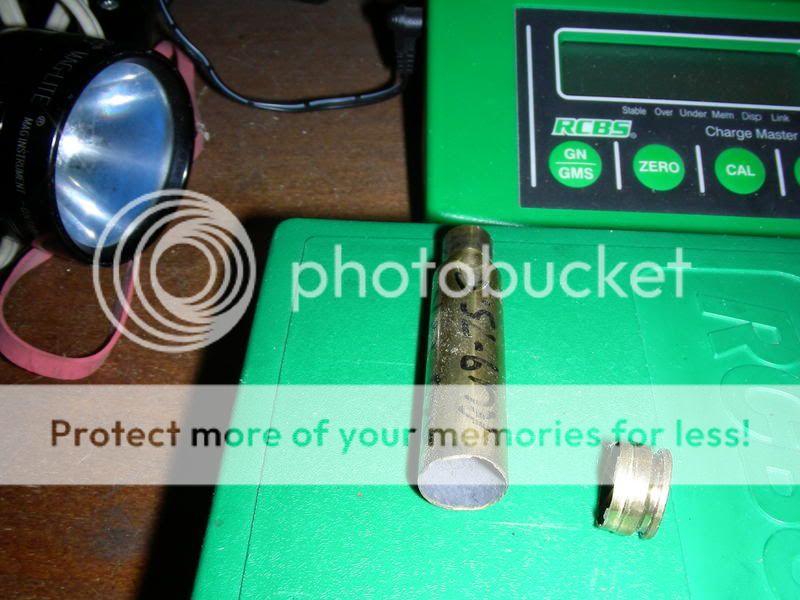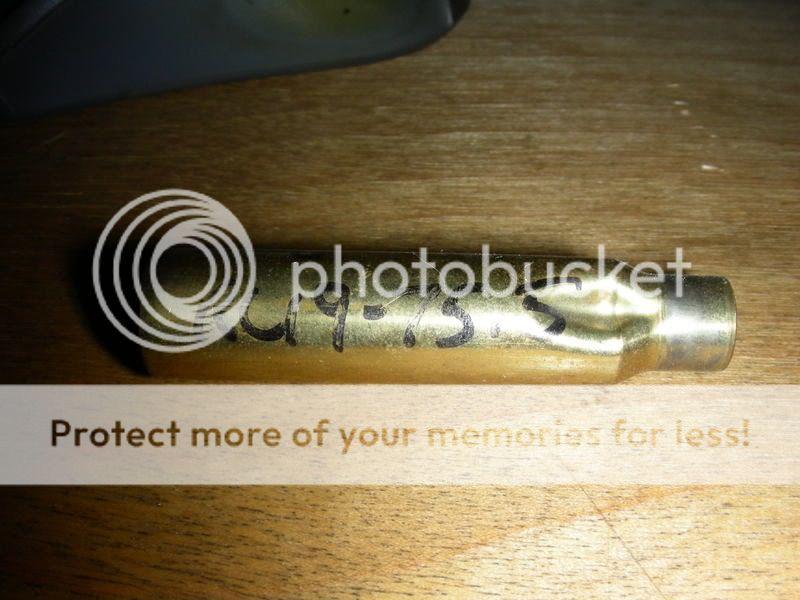JAWZ
Well-Known Member
I was at the range today testing out the new 180gr E-tip bullet and a box of 180gr Hornady interlock when I ran into an interesting problem.
I was using brand new brass and the rifle is my 300wby mag in MKV accumark.
The first loads of E-tips there was no problems at all no preasure signs easy bolt lift the whole shebang. But when i fired the exact same powder charge with the interlocks i was getting powder burns down the side of the case all the way to the head and still no preasure signs.
Then on the 4th shot in the group i extracted the case and found that it had caved in on 1 side of the shoulder. I just dont undrstand how this could happen.
I just dont undrstand how this could happen.

I understand that gas is escaping around the side of the case but how, is it because of the canalure?
Any help or sugestion to what may have caused it would be awsome.
Andrew
I was using brand new brass and the rifle is my 300wby mag in MKV accumark.
The first loads of E-tips there was no problems at all no preasure signs easy bolt lift the whole shebang. But when i fired the exact same powder charge with the interlocks i was getting powder burns down the side of the case all the way to the head and still no preasure signs.
Then on the 4th shot in the group i extracted the case and found that it had caved in on 1 side of the shoulder.

I understand that gas is escaping around the side of the case but how, is it because of the canalure?
Any help or sugestion to what may have caused it would be awsome.
Andrew



